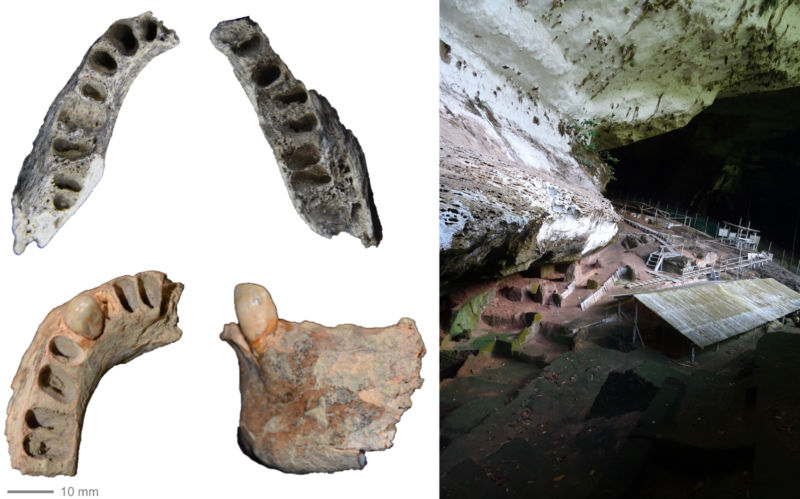30,000-year-old jawbone records tough diet in Pleistocene Southeast Asia

Enlarge / Two human mandibles from Niah Caves in Borneo; the top jaw is 30,000 years old, and the bottom jaw 11,000 years old. (credit: Darren Curnoe)
Life wasn't easy for the first humans to settle in the islands of Southeast Asia. The rain forest was a completely new environment for people in the Late Pleistocene, so the learning curve was probably steep. A 28,000-year-old jawbone from Niah Cave in Northeast Borneo reveals that Pleistocene people who first arrived there ate a tough diet.
The mandible belonged to a person who lived and died in Borneo nearly 10,000 years before the end of the last Ice Age, about 28,000 to 30,000 years ago, according to uranium-series dating (there wasn't enough collagen left in the bone for radiocarbon dating). It's small, but it's also unusually thick. Even without any other bones, the jaw tells us two important things about the Southeast Asians of the Pleistocene.
First, they were small. The jawbone is part of an adult mandible, but its height points to a person of short stature and small body size. That's something the ancient Niah Cave person has in common with modern indigenous people of the highlands of Borneo and the Philippines. It's also a very practical adaptation to life in the rain forest, according to University of New South Wales archaeologist Darren Curnoe-another way human diversity has been shaped by our long relationship with our environments.
Read 13 remaining paragraphs | Comments